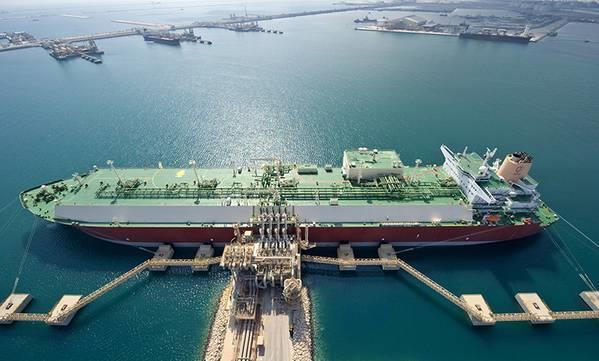
For price-sensitive liquefied natural gas (LNG) buyers in Asia, now is not the time to build new LNG import terminals, according to the latest study from the Institute for Energy Economics and Financial Analysis (IEEFA).
The institute, whose “mission is to accelerate the transition to a diverse, sustainable and profitable energy economy,” argues that lasting volatility in the wake of the Russia-Ukraine crisis is likely to exacerbate energy insecurity and stranded asset risks for new LNG buyers.
IEEFA “are nothing if not consistent in advocating for caution in undertaking future LNG-to-power developments,” said Daniel Hamer, founder of Vietnam-based energy consultancy NOVA International.
IEEFA have released a series of reports on this topic. As Hamer noted on Linkedin, the basis of the argument is the same – price volatility offers unacceptable risks to emerging Asian buyers, and the risk of LNG assets becoming stranded or locking regional governments into uneconomic guarantees that displace local renewable energy is unacceptably high.
“I don’t know about the rest of the region, but based on my long experience in Vietnam, working on gas-to-power commercial issues, the country (and its gas buyers) is in for sticker shock – not only relating to the price of LNG, but also in relation to the price of power generated from that LNG,” said Hamer.
As Hamer pointed out, it is much better to focus on developing available domestic resources at hand. In Vietnam, of the 180 billion cubic metres (cm) of gas resources discovered in the last 10 years only the Sao Vang and Dai Nguyet fields have approved field development plans, as the FID process has proven a long and arduous road
Progress at ExxonMobil’s Blue Whale, as well as Vietnam’s other giant gas development, known as the Block B project, has been pretty much stalled for several years. They are the two biggest field developments underway in the country.
Instead of focusing on developing its available domestic gas resources, Vietnam appears to have encouraged numerous LNG-to-power development proposals, which will be exposed to global LNG prices.
Buyers in Asia, including Vietnam, should take note of IEEFA’s warning that fossil fuel price volatility in the wake of Russia’s invasion of Ukraine may not be a short-term phenomenon.
“Lasting volatility in LNG prices could mean that price-sensitive buyers in Asia are effectively locked out of the market for several years, unable to compete on price. Ultimately, LNG import assets—terminals, pipelines, and power plants—face a high risk of being under-utilised and stranded due to a lack of affordable fuel,” cautioned IEEFA.
Yet, many countries throughout Asia are doubling down on LNG import infrastructure projects despite the clear economic and financial risks, added the institute.
There are $379 billion of ongoing gas infrastructure investments throughout Asia, including power plants, pipelines, and LNG import terminals, according to data from Global Energy Monitor. Nearly 80 million tonnes per year (mtpy) of LNG import capacity is expected to be completed in Asia in the next two years. And, if terminals are completed in Vietnam and the Philippines, both countries will become new entrants into LNG markets.
Several countries, including Thailand, the Philippines, and Bangladesh, have increased the targeted share of natural gas in their energy mixes despite declining domestic production. Prices of domestically produced gas in the region have typically ranged from $1-5 per million British thermal units (MMBtu)—a far cry from the current LNG prices in Asia of $35-40/MMBtu, said IEEFA.
But with rapidly declining domestic natural gas reserves, many countries have looked to LNG as a convenient replacement.
“Rather than simply replacing one form of gas for another,” said energy finance analyst Sam Reynolds, author of the IEEFA report, “the shift to LNG will involve a steep, structural increase in fuel costs that may completely negate economic arguments for gas-fired power generation versus cleaner, domestically-sourced renewables.”
Multiple factors cloud the outlook for LNG prices over the next several years, meaning that volatility may continue to threaten price-sensitive buyers’ energy security and energy affordability, said IEEFA.
For example, “Europe has committed to weaning itself off Russian piped gas by procuring more LNG. This suggests an evolution from Europe’s role as a balancing buyer, which historically absorbed excess volumes, to a direct competitor with Asian customers.”
Moreover, significant new LNG supply is not expected online until the middle of the decade. This means that Europe will have to pull cargoes from other regions—most likely from buyers unable to compete on price.
“The threat of reduced Russian energy supplies to Europe also looms large. Any cuts to the Russian supply of gas to Europe could push Europe further into LNG markets, tightening the demand-supply balance and boosting prices further,” noted IEEFA.
“The backdrop to these volatile prices is one of the most uncertain global macroeconomic environments in recent memory,” said the institute.
Indeed, LNG demand destruction is already happening rapidly across many countries in South Asia and Southeast Asia, said Alex Siow, an LNG analyst at ICIS. The prospect of demand destruction raised its head starting last September, when the EAX – ICIS’ benchmark spot price for Asia – “broke above $20/MMBtu and has never looked back,” said Siow recently.
Many existing gas fields across South Asia and Southeast Asia have been neglected. As a result, they have experienced double digit output declines due to under-investment, concession issues and operational inefficiencies, particularly in Bangladesh, India, Indonesia, Pakistan, and Thailand, noted Siow.
High prices and demand destruction “is a fundamental global gas supply problem, not just caused by any single event, such as the Russia–Ukraine war,” he warned.
“LNG demand destruction is a price response to the lack of supply globally,” said Siow.
Recommended for you

